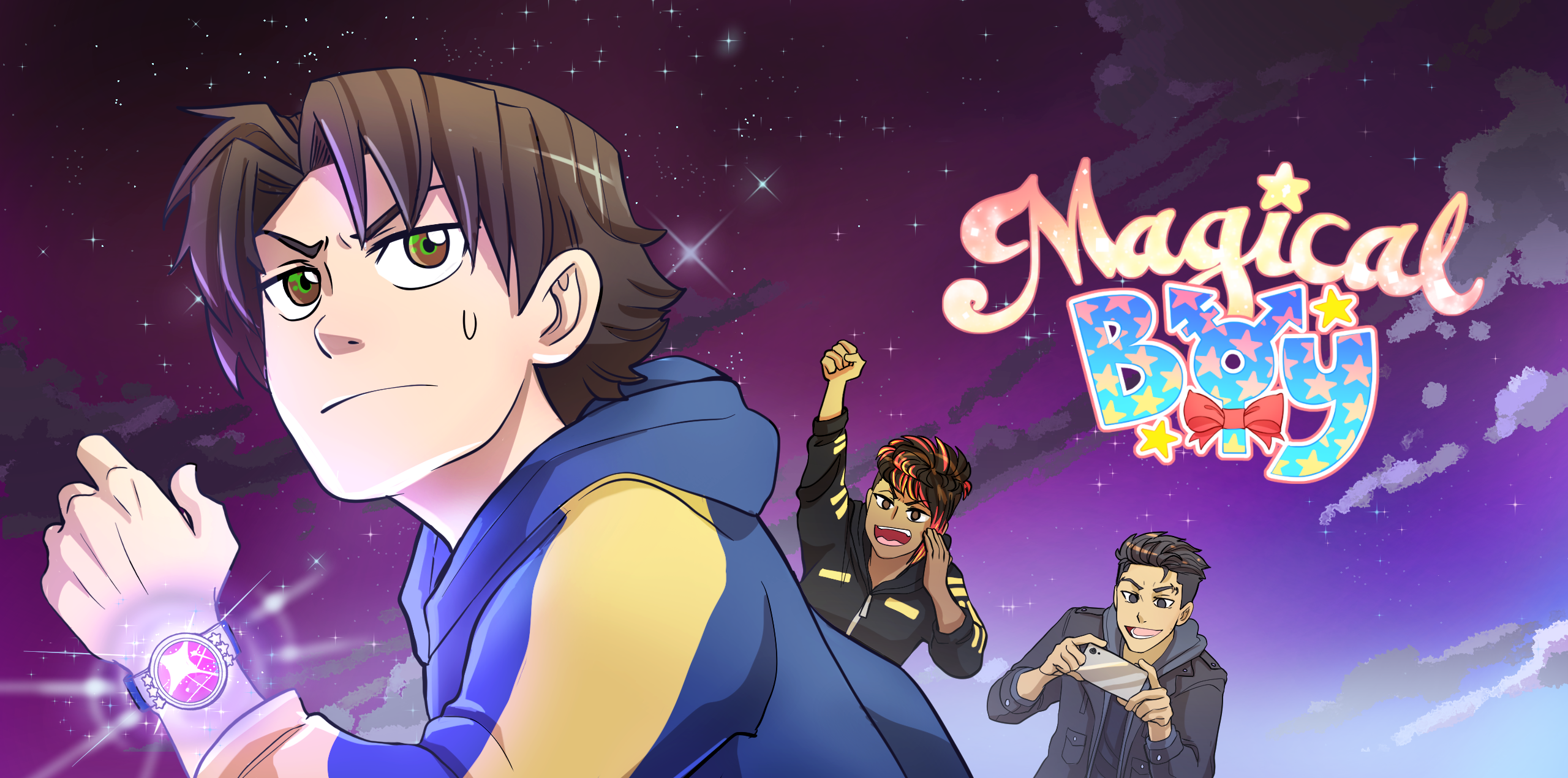Table of Contents Show
Meet Max Owen. He’s your average high school boy, except for one major thing: he’s the latest reincarnation of Aurora, the goddess of light. As the latest reincarnation, it’s his job to learn how to use the magical staff that’s been passed down for generations and stops darkness from overtaking the world. If that wasn’t stressful enough, his mom expects him to do this as a magical girl, instead of the magical boy he is.
Magical Boy by Vincent Kao, known as The Kao, is a unique addition to the magical girl genre as it has many of the genre-defining elements but uses them in new ways in order to explore Max’s experience as a transman. LGBTQ+ stories aren’t new to the magical girl genre, they are in fact a major part of the genre’s history with influential series like Sailor Moon featuring various queer characters and narratives. But there have been few series that put LGBTQ+ identities at the forefront and even fewer that focus on transgender individuals.
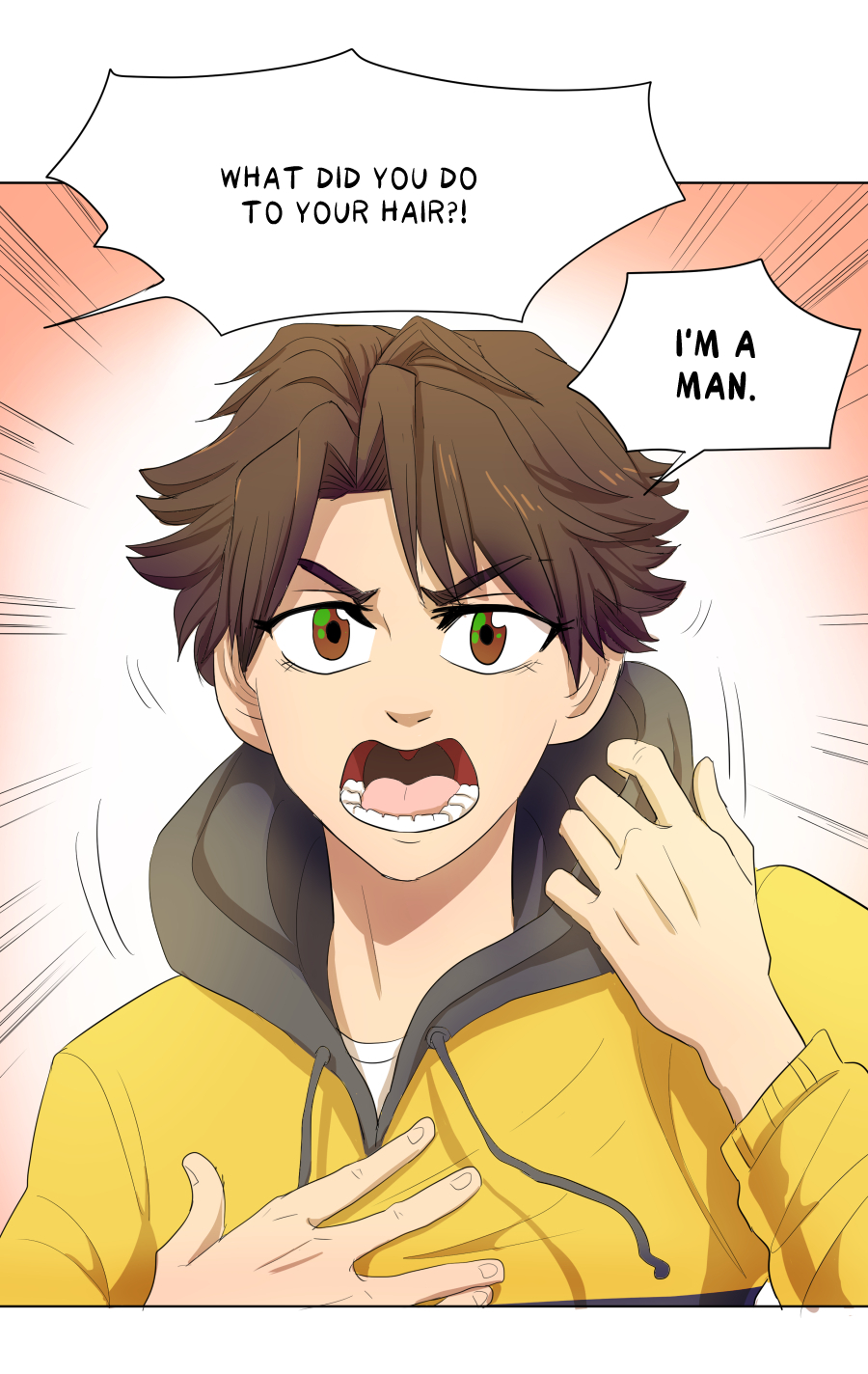
Through Magical Boy, The Kao is continuing the LGBTQ+ tradition of the magical girl genre and exploring its themes of self-love, friendship, and rejection of gender norms, but in new and unique ways. The result is a magical girl series that is funny, heartwarming, and thrilling.
Meet The Magical Boy, Max
Long ago, there was a goddess, Aurora, who embodied the power of light. She used her powers to inspire hope, love, and compassion in all living creatures. Unfortunately, there was another deity known as Devoid that embodied the power of darkness. Devoid and his creatures of the dark would absorb any living creature’s life energy experiencing negative emotions like despair and hatred. This would weaken and eventually kill the creature and strengthen Devoid and his creatures of the dark.
To protect the world from darkness, Aurora gave up her very existence to seal Devoid and his creatures of the dark in another realm. After Aurora’s end, her descendants were tasked with maintaining the seal. When they come of age, they are given the magical pendant that becomes their staff, a book to guide them, and the ability to communicate with Aurora’s guardian. They use the magical staff to seal any leaks and defeat any creatures of the dark that escape. The longer a leak is open, the more pests come through, and the more time they have to gain power by draining other people’s negative emotions. If they gain enough strength and open three large leaks, they free their master Devoid.
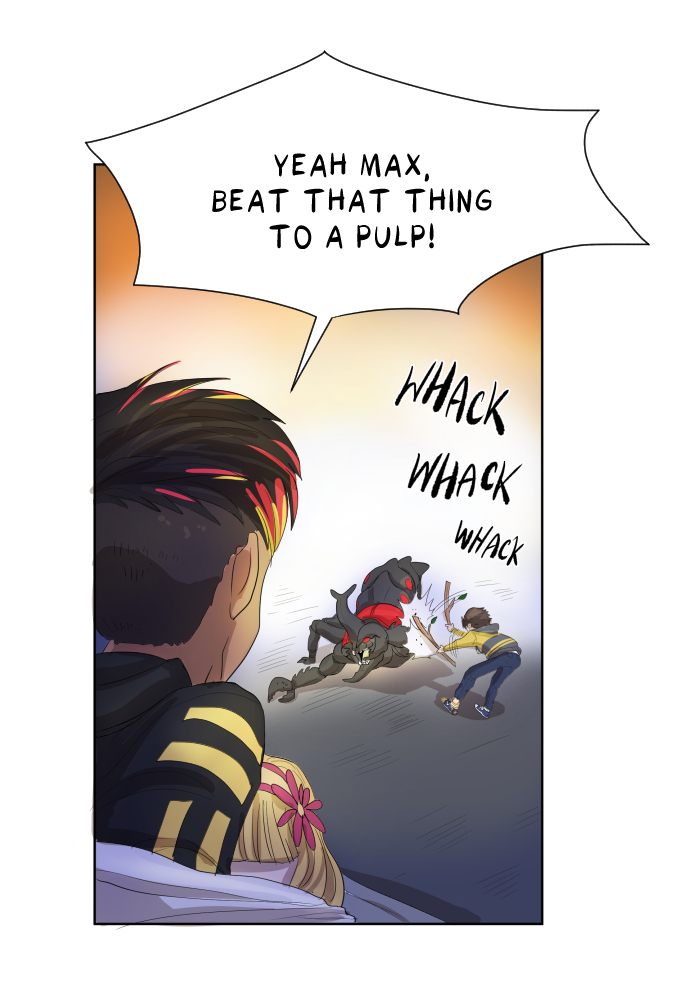
Since he was a child, Max has been told this story, but he thought it was nothing more than a fairy tale his mother was obsessed with. It’s the last thing on his mind when he’s coming out as transgender to his parents. When his mother insists that Max can’t be a man because he is a goddess’s descendant, Max runs out of the house, confused, hurt, and angry.
He soon discovers his mother was telling the truth when he encounters a creature of the dark. When the pendant transforms into a staff and he’s magically transformed into a magical girl with a long frilly dress, a fancy hair updo, and a full face of make-up, he struggles to defeat the monsters with the gender dysphoria the outfit triggers. After his first successful fight, Max begins his journey: he has to learn how to use his magic, but he can’t do it as the graceful magical girl his mother insists he must be as a goddess’ descendant. Max can only be the slightly clumsy but still cool magical boy he is.
The Magical Girl Genre
Magical girl is a genre of Japanese anime, manga, video games, and light novels that began with the manga Himitsu no Akko-chan in 1962. Since then the genre has grown and the magical girl heroine has become a staple of anime/manga storytelling. The genre has also inspired animated series in other parts of Asia, Europe, and the United States, with various creators using many common elements and themes.
Magical girl series share a basic plot: a kid or young teen discovers a magical artifact that responds to the dormant magical abilities within themselves. They must use their new magical abilities to fight an evil that is wreaking havoc around their city. When they use their magical item, they transform into their fighting outfit, which is usually hyper-cute and feminine. They also have an animal sidekick that guides them as they learn to use their new powers. The animal sidekick usually has another, a more threatening form that only appears once the magical girl has leveled up.
Besides plotlines and characters, the genre has a lot of common themes. As a genre, magical girl series reclaim femininity and present traditional feminine characteristics, traits, and appearance as something powerful and heroic. The importance of empathy and cooperativeness is a common theme, heroines often overcoming evil through their strong friendships or even through their ability to show compassion towards antagonists.
Additionally, many series discuss self-love and self-acceptance, demonstrating how much stronger heroines are when they can love themselves without shame. In combination with its rejection of negative views of femininity, this emphasis on self-love may explain why the genre includes so many LGBTQ+ characters. Magical girls rise above restrictive and toxic societal expectations and internal insecurities to save the day. Magical Boy shares many similarities with the Japanese magical girl series, both in terms of the plot and its themes. However, The Kao’s new approach to classic tropes creates a series that is more relatable and more inclusive.
Building On LGBTQ+ History
As stated, LGBTQ+ themes, characters, and narratives are nothing new to the magical girl genre. Influential series like Sailor Moon and Card Captor Sakura have queer romances, queer unrequited crushes, non-binary/genderqueer characters, and transgender characters. However, most series focus on a ciswoman and her romance with cisman. The Kao has put a gay, magical transboy and his experiences as a transman in a cisnormative and heteronormative society at the center of the story.
Despite its long history, the genre hasn’t had a main character like Max before; a transman with a male love interest. It deviates further from the standard by including the homophobia and transphobia Max and his LGBTQ+ friends’ experience as part of the challenges he must face. In other magical girl series, LGBTQ+ identities are completely normalized, creating worlds free of prejudice.
For example, in Cardcaptor Sakura, Syaoran’s crush on another boy is never portrayed as requiring explanation. When Sakura learns that her crush Yuki is in a relationship with her older brother, her response is heartbreak from her feelings being unrequited, nothing more. Many magical girl series takes the same approach, normalizing LGBTQ+ identities and situating them in a world that hasn’t been dominated by cisnormativity and heteronormativity. While this type of representation is important and beneficial for creating a more accepting culture, it also has its shortcomings. LGBTQ+ viewers living in a heteronormative world might not relate to a world where the LGBTQ+ characters are free from homophobia and transphobia.
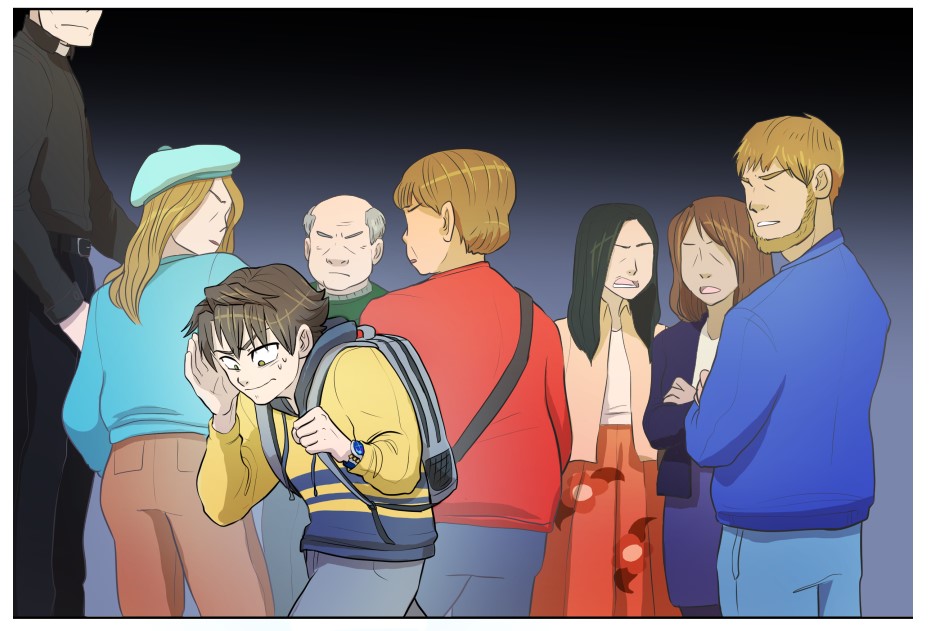
Max is a magical boy, but he also lives in a heteronormative society. His transgender identity isn’t accepted by his Christian and conservative peers at school. On top of this social rejection, his mother thinks it’s a delusion hindering his ability to complete his goddess’s duties. His mother’s rejection is intensified by her insistence that “embracing his femininity” is the only way for him to complete his duty as a descendant. Essentially he is being told by his mother that his refusal to be the woman society assigned him to be at birth is destroying the world. It’s a rejection that makes his journey as a magical boy even more difficult. How can the descendant of goddess that embodies light be at their full strength when they are full of feelings of isolation and self-loathing?
There are also LGBTQ+ characters in the series whose challenges as queer women are shown. There’s Max’s best friend Jen who was dumped by her childhood friend Pyper and condemned by her Christian peers. Jen’s tomboy appearance is also viewed by Max’s mom as deviant and the reason behind Max’s failure to be a “true woman.” Then there’s Pyper, who has been trying to deny her attraction for girls because it goes against her religious upbringing.
She’s full of anger and hatred, which makes her easy prey for the creatures of the dark. As members of team magical boy, they must also overcome prejudice and internalized homophobia to help Max save the world. The Kao differentiates from previous representations by having Max’s identity be a significant part of his journey as the lead. He’s not just saving the world, he’s showing the world that his identity is valid. He is showing them that being a hero isn’t about gender, but about who the person is. Through this, the creator also explores femininity and heroism in a new way.
Femininity And Magical Girls
The magical girl genre reclaims femininity for viewers in a patriarchal society that has pushed femininity onto girls while also labeling femininity as weak and inferior to masculinity. Even recent magical girl series that have gone darker than previous ones still have the frilly dresses and cute girls. There’s something empowering about seeing a girly girl take on the role of the fantasy hero fighting monsters. The Kao doesn’t try to denounce this message but just examines this hyper-femininity with a new lens.
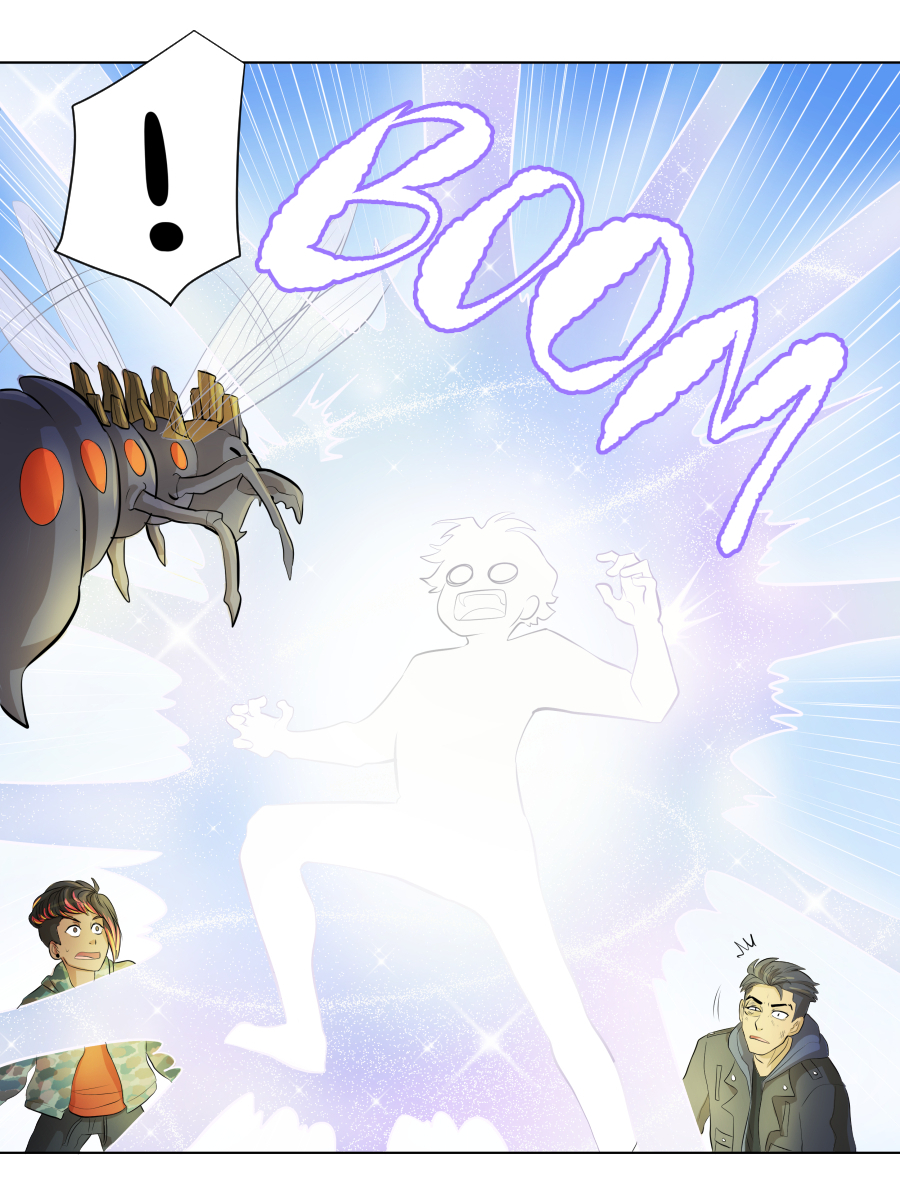
The descendants of the goddess have a long history of upholding traditional views of femininity. Descendants who deviate are viewed as not being able to wield the power of the goddess properly. Max’s mother herself was viewed as going against tradition for wearing a more revealing dress. Her mother thought modesty was required for her to be a “true woman.” Feminine appearances are associated with power, like in other magical girl anime, but in this context, it’s more of a restrictive rule that has been passed down. It’s more similar to the toxic gender expectations of society.
Through Magical Boy, The Kao explores how there is nothing wrong with being feminine, but there is something wrong with pushing your view of femininity onto someone and criticizing them for not living up to your gender expectations. Max’s mother believes being in touch with your femininity is the key to power, and she puts an emphasis on appearance and mannerism. Max’s journey proves her belief incorrect. While Aurora was a graceful, lovely, and feminine woman, her feminine appearance and mannerisms weren’t what made her a goddess of light. When Max transforms into the frilly dress or when he mimics his mother’s graceful positions, he struggles.
Max is the most powerful when being empathetic and supported by his friends. When he embraces sentiments like compassion and cooperatives, Max is embracing the light and gains strength. Magical Boy‘s cast also includes Sean, a classmate who has a reputation as a tough rebel, who is viewed as weak by his father because he loves magical girl series. While Sean appears to have no problem being open about his love for magical girls and is ecstatic when he discovers Max is a magical boy, his father constantly makes him feel like a failure for not being able to live up to his expectations of manhood. As a member of Max’s team, he must also show that his feminine hobbies aren’t a weakness.
The Kao emphasizes the strength of feminine personality traits, which have also been labeled as weak and have made them a power source. This is what the magical girl genre is ultimately about. It’s about loving who we are and embracing what makes us powerful. Sometimes it’s in the girly girl outfits and hyper cuteness of many magical girl series. Sometimes it’s in the masculine, prince-warrior appearance Max strives for. The genre’s refusal to let society decide what strength looks like and empathy makes the heroes and heroines and the magical girl genre strong.
The Magical Transformation
The magical transformation of the magical girl genre is iconic. It’s a moment of beauty and empowerment for most characters in the magical girl genre. It’s a bit more complicated in Magical Boy; in fact, the first few transformations are incredibly demoralizing for Max.
When Max transforms the first few times, he experiences gender dysphoria. Gender dysphoria is a conflict between a person’s physical or assigned gender and the gender they identify. People with gender dysphoria can experience significant distress and problems functioning associated with this conflict. When he loses his binder each time he transforms, the transformation is much more anxiety-inducing than empowering. It’s a moment of losing control over how he wants to present himself.
However, the outfit slowly starts to change. Max’s mother explains that the outfit changes to match each descendant’s preferences but quickly rejects the idea that it could be anything other than a dress or skirt. But she’s wrong. With each transformation, the pendant begins to create a masculine outfit that matches who Max is. The transformation eventually becomes empowering, but its impact is different. It’s satisfying to see Max’s gender identity acknowledged by the magic pendant, to see Max become the hero he wants to be and not the hero his mother expects him to be.
The Power Of Light
The goddess of light embodies the feelings that help people through dark times: compassion, self-love, and friendship. While the readers watch Max learn to master his powers through self-love, self-acceptance, and friendship, they are also watching the struggles of a trans teen and his friends who also feel they’ve failed to live up to gender expectations. Max and his friends show the world that they can save the world by being who they are, not who others expect them to be.
Interested? You can read Magical Boy on Tapas. Follow The Kao on Twitter, Instagram, Tumblr, and Tik Tok. If you have the financial means, become a patron, and/or go shopping.
